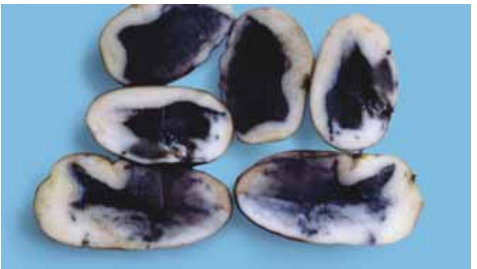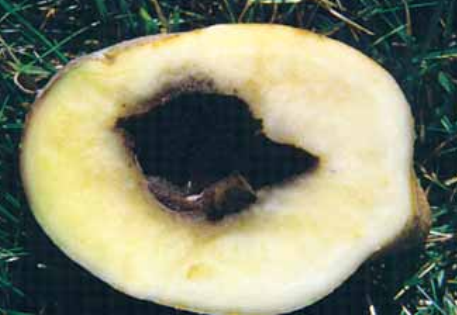Blackheart is caused by a deficiency of oxygen that impairs tuber respiration. Freshly harvested tubers are especially vulnerable to blackheart if held in a
low-oxygen environment. In storage, tubers become prone to blackheart if stored in closed bins with poor ventilation. Under these conditions, oxygen levels drop
and CO2 levels may increase above 1000 ppm for an extended period of time, inducing the development of blackheart. Also, blackheart may develop in the field
under waterlogged conditions.
A black, irregularly shaped spot usually develops in the center of the tuber. The black tissue is firm.
The black discolouration often extends to the edges and diffuses into healthy tissue without a distinct margin.


cavities form
